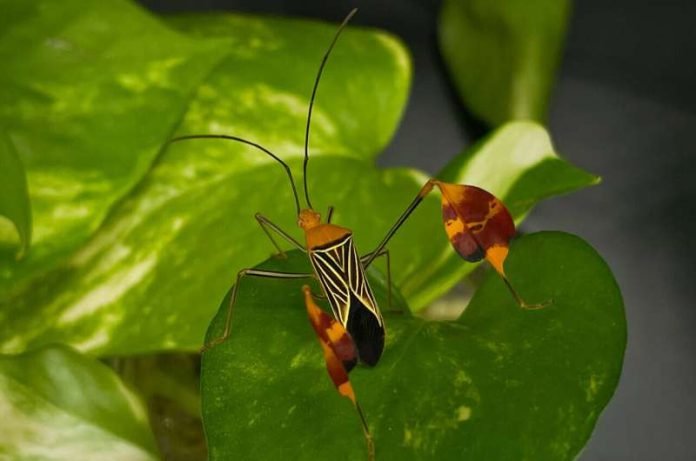
In the lush surroundings of Gamboa, Panama, a team of scientists embarked on an intriguing experiment involving crickets, matador bugs, and the keen-eyed motmots.
The crux of their study revolved around understanding why matador bugs, known for their striking red flags on their hind legs, exhibit such a vibrant display.
This curiosity was piqued by the fact that both male and female matador bugs flaunt these flags, not just as a mating call, but consistently, regardless of the presence of potential partners.
Juliette Rubin, leading the research and fueled by years of studying butterfly and moth defense mechanisms, delved into whether these red flags acted as a diversion for predators or served as a stark warning of the bugs’ chemical defenses.
By attaching similar flags to crickets, a favorite among bird predators, the team set out to observe the reaction of motmots—a species admired for its dazzling feathers and sharp vision.
The experiment took place in the dense forests near Gamboa, where Jorge Medina, a research assistant with a knack for avian behaviors, painstakingly captured motmots using strategically placed nets.
These birds, once caught, were introduced to crickets both plain and flag-adorned, as well as to the matador bugs themselves.
Contrary to initial hypotheses that the flags might direct predator attacks away from vital body parts, the study uncovered that these colorful extensions primarily serve as a chemical defense warning.
Birds hesitated more before attacking crickets with flags, suggesting that the flags alone could signal potential danger. Interestingly, the matador bugs, irrespective of their flags, were largely avoided by the birds, hinting at a more ingrained aversion possibly due to the bugs’ taste or chemical makeup.
To further cement this finding, the team also presented both insects to chicks unfamiliar with either, observing a clear reluctance and distaste towards the matador bugs compared to the crickets, which were attacked and consumed without hesitation.
Published in Behavioral Ecology, the study not only challenges previous notions about the purpose of conspicuous traits in animals but also highlights the complex defense strategies evolved over time.
These flags, while not the sole deterrent, play a significant role in the broader spectrum of the bugs’ survival tactics against predation.
This research, a collaborative effort among experts from various institutions, shines a light on the intricate dance of evolution, where every color, movement, and signal in the animal kingdom serves a purpose, often a matter of life and death.
The research findings can be found in Behavioral Ecology.
Copyright © 2024 Knowridge Science Report. All rights reserved.



